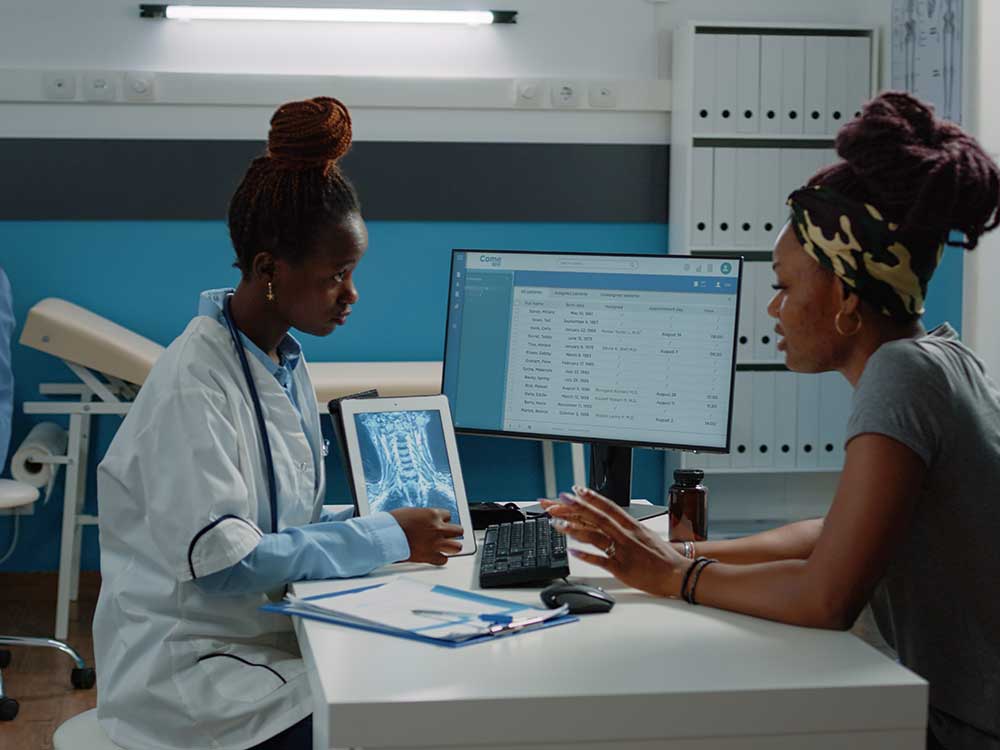Ideal Practices in Medical Management for Improving Efficiency and Decreasing Prices
In the ever-evolving landscape of healthcare, the quest of best methods in clinical administration is extremely important for enhancing performance and suppressing expenses. By integrating sophisticated innovations such as electronic health records and telemedicine, healthcare service providers can enhance procedures and boost person care.
Leveraging Advanced Technology
The integration of electronic remedies right into health care systems has actually changed the way facilities operate, streamlining processes and enhancing individual treatment. By centralizing individual information, EHRs eliminate the demand for difficult documents and promote seamless interaction among health care providers.
Telemedicine is another technological improvement that has reinvented individual interaction. It offers convenience for both people and healthcare specialists by making it possible for remote assessments, which can decrease the need for in-person visits and enhance appointment organizing. Additionally, telehealth systems can expand health care accessibility to rural or underserved locations, bridging voids in treatment shipment.
Additionally, the use of Artificial Knowledge (AI) and machine knowing is ending up being increasingly widespread in anticipating analytics, permitting for very early discovery of prospective health and wellness issues and more educated decision-making. These modern technologies, when incorporated properly, can boost diagnostic precision and customize client therapy strategies, ultimately resulting in boosted healthcare outcomes and functional performance.
Optimizing Resource Appropriation
Reliable resource allotment is vital for taking full advantage of the efficiency of clinical administration. By purposefully taking care of resources such as personnel, tools, and finances, medical care facilities can substantially improve their functional efficiency, enhance individual results, and reduce unneeded expenditures. The initial step in enhancing resource allowance involves carrying out a thorough assessment of existing assets and determining locations where resources may be underutilized or exhausted. This assessment should be data-driven, utilizing metrics and analytics to notify decision-making processes.
Prioritizing resource allocation based on patient demands and solution demands is essential. Applying versatile staffing versions can likewise enhance labor sources by readjusting personnel allotment in feedback to rising and fall client quantities.
Funds should be meticulously kept an eye on and allocated with calculated foresight to support both short-term functional requirements and long-term institutional objectives. This includes investing in training programs that boost personnel proficiencies and taking on energy-efficient practices that decrease operational prices (medical administration). Ultimately, a maximized resource allowance strategy promotes a sustainable medical care atmosphere that is receptive, efficient, and financially sensible
Streamlining Operations Processes
When medical care facilities purpose to enhance functional performance, simplifying operations processes comes to be a pivotal emphasis. Effective operations decrease redundancy, eliminate unneeded actions, and enhance coordination among medical care experts. This strategy not only speeds up solution shipment yet additionally improves the high quality of individual care.

Following, technology combination plays a significant function in enhancing workflows. Implementing electronic health and wellness records (EHRs) and electronic doctor order entry (CPOE) systems lowers documentation, decreases human mistake, and makes sure info website link comes to all pertinent employees. Additionally, leveraging telemedicine platforms can simplify patient assessments and follow-ups, decreasing the stress on physical facilities.

Ultimately, structured operations cause set you back decreases and enhanced person complete satisfaction, fostering a much more sustainable healthcare environment.
Enhancing Information Management
Building upon streamlined process, maximizing data management becomes a crucial part beforehand healthcare management. Efficient information monitoring systems are essential for maintaining precise individual records, improving decision-making, and ensuring conformity with regulatory standards. By applying robust information monitoring remedies, health care centers can enhance the high quality of patient care while at the same time reducing functional expenses.
One key element of boosting data management is the assimilation of innovative electronic health and wellness record (EHR) systems. These systems help with the smooth exchange of client details throughout various departments, reducing duplication of examinations and lessening mistakes. A well-designed EHR system supports data analytics, making it possible for health care suppliers to determine fads and make educated decisions relating to patient care.
Furthermore, safeguarding patient information is extremely important. Taking on comprehensive cybersecurity steps, including file encryption and routine audits, ensures the stability and privacy of sensitive details. This not just protects individuals yet likewise maintains the institution's reputation.
Purchasing personnel training is another crucial element. Educating medical care experts on data management techniques boosts their capability to properly make use of technology, resulting in enhanced client outcomes. To conclude, improving data monitoring via sophisticated innovation and detailed training is vital for achieving effectiveness and price decrease in clinical administration.
Fostering Collaborative Communication
An important element beforehand clinical management is promoting collaborative communication among health care experts. Effective interaction is extremely important for guaranteeing smooth patient treatment, enhancing treatment outcomes, and decreasing mistakes. By urging open discussion and control throughout multidisciplinary groups, health care companies can enhance their functional performance and lower unnecessary prices.
Central to this method is the integration of interaction modern technologies such as digital health documents (EHRs) and secure messaging systems, which assist in the rapid exchange of essential individual information. These tools make it possible for doctor to accessibility and share information in explanation genuine time, making certain that all employee are educated and lined up in their look at here now decision-making processes. Moreover, normal group meetings and interdisciplinary rounds can better advertise a culture of partnership and accountability.
Training programs concentrated on improving interaction skills are likewise essential. Inevitably, promoting joint interaction leads to enhanced medical care delivery and price financial savings.

Final Thought
Incorporating sophisticated technology, such as digital health and wellness documents and telemedicine, along with maximized source allotment and streamlined workflow processes, is essential for boosting performance in medical management. Effective data administration and promoting collective interaction among health care teams are important for reducing redundancies and boosting treatment top quality. By focusing on preventive treatment and taking part in top quality enhancement efforts, medical care organizations can achieve significant cost savings and enhanced patient results, consequently making certain lasting healthcare delivery in a significantly complicated atmosphere.